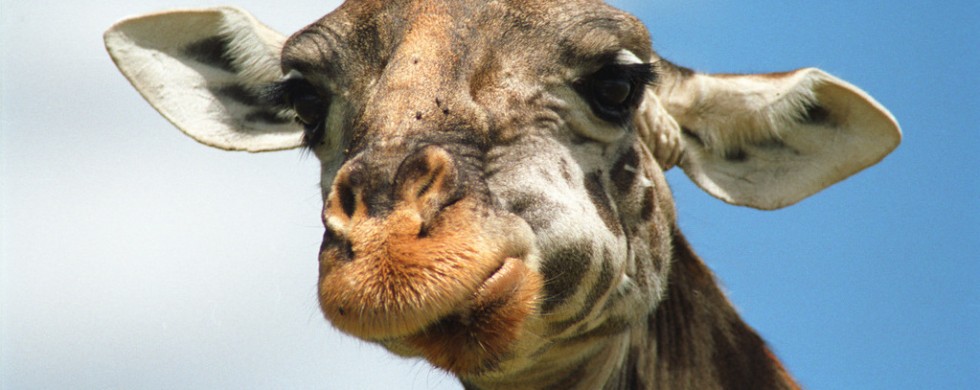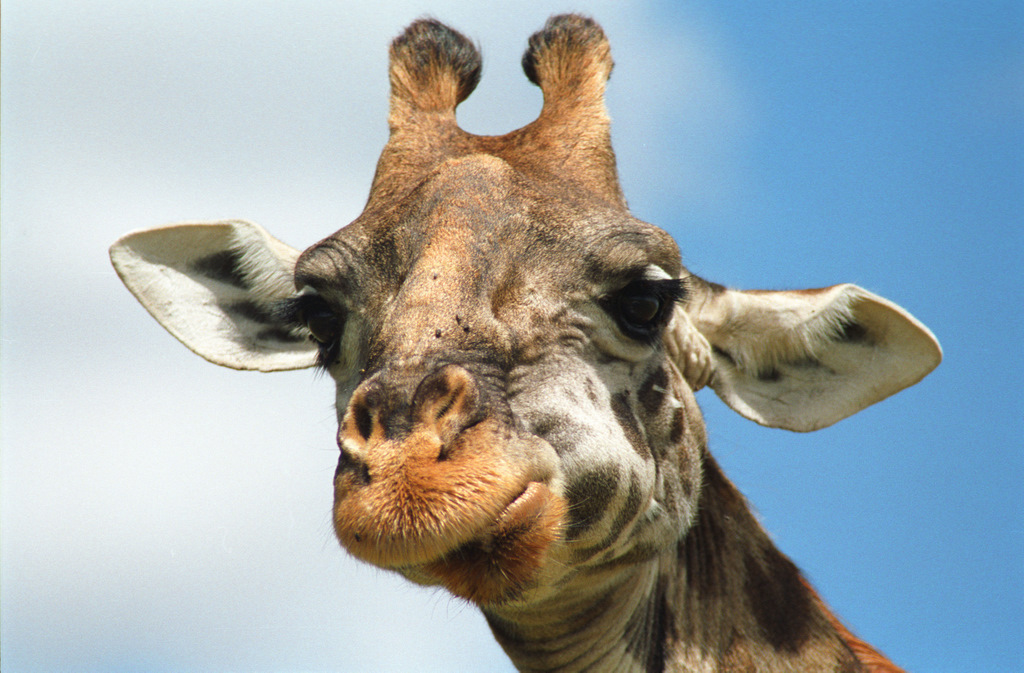
15
2010A Tall Tale – June 2010
Shot of the Month – June 2010
Last month I talked about the leopard. This month we will discuss the camelopard — the 14th-century term used by the English for 500 years for the creature we know as the giraffe. In fact, the scientific name for the giraffe, camelopardalis, comes from the early Roman name for the beast that they thought resembled a cross between a camel (general size and look) and a leopard (the spotting).
Giraffe Fun Facts:
Funny Looking Cows: Did you know that giraffes were the largest ruminants in the world? Yep, just like cows, giraffes have four stomachs and they regurgitate each mouthful several times to process it. Giraffes can often be seen chewing their cud, just like Bessie the cow on your local farm.
Neck and Neck: The six-foot neck found on your typical giraffe helps make it the tallest mammal in the world. You might imagine that they have quite a few vertebrae to keep that neck going but like all mammals, including us, they only have seven vertebrae in their neck. Seven very e-l-o-n-g-a-t-e-d vertebrae!
Big-Hearted: Literally. Pushing blood up that lengthy neck requires a powerful pump. The giraffe’s heart weighs 22 pounds and is about 2 feet long.
That First Step is a Doozy: Mother giraffes give birth standing up so newborns fall six feet, head first, to the ground. Ouch.
We Need a Bigger Crib: At birth, giraffes are 6 feet tall.
Light Sleepers: Giraffes require the least sleep of any mammal and on a given day they doze a maximum of 2 hours and may sleep as little as 10 minutes in a 24-hour period. Periods of sleep rarely last longer than five minutes at a time. Yes, they do sit on the ground to do this, resting their head on their rump.
Big Eaters: Giraffes prefer the leaves and twigs of Acacia trees. When times are good they can eat 65 pounds of the stuff in a day. If water is plentiful giraffes can drink 10 gallons at a time. When water is scarce, giraffes can go for long periods without water due to the high water content of acacia leaves.
Just Plain Big: Male giraffes can reach 18 feet in height (meaning he can look in your second-story window without stretching) and can weigh from 1,800 to 4,300 pounds. The females stand 13 to 15 feet in height and can weigh 1,200 to 2,600 pounds.
Kiss at your Peril: Giraffes have tongues that are 18 inches long to help reach far away leaves and twigs.
Cute but Deadly: The giraffe has six-foot-long legs with saucer-plate size hooves that deliver a kick that can crush the skull of a lion.
Ok, now you have all the basics on our favorite even-toed ungulate, the star previously known as camelopard.

